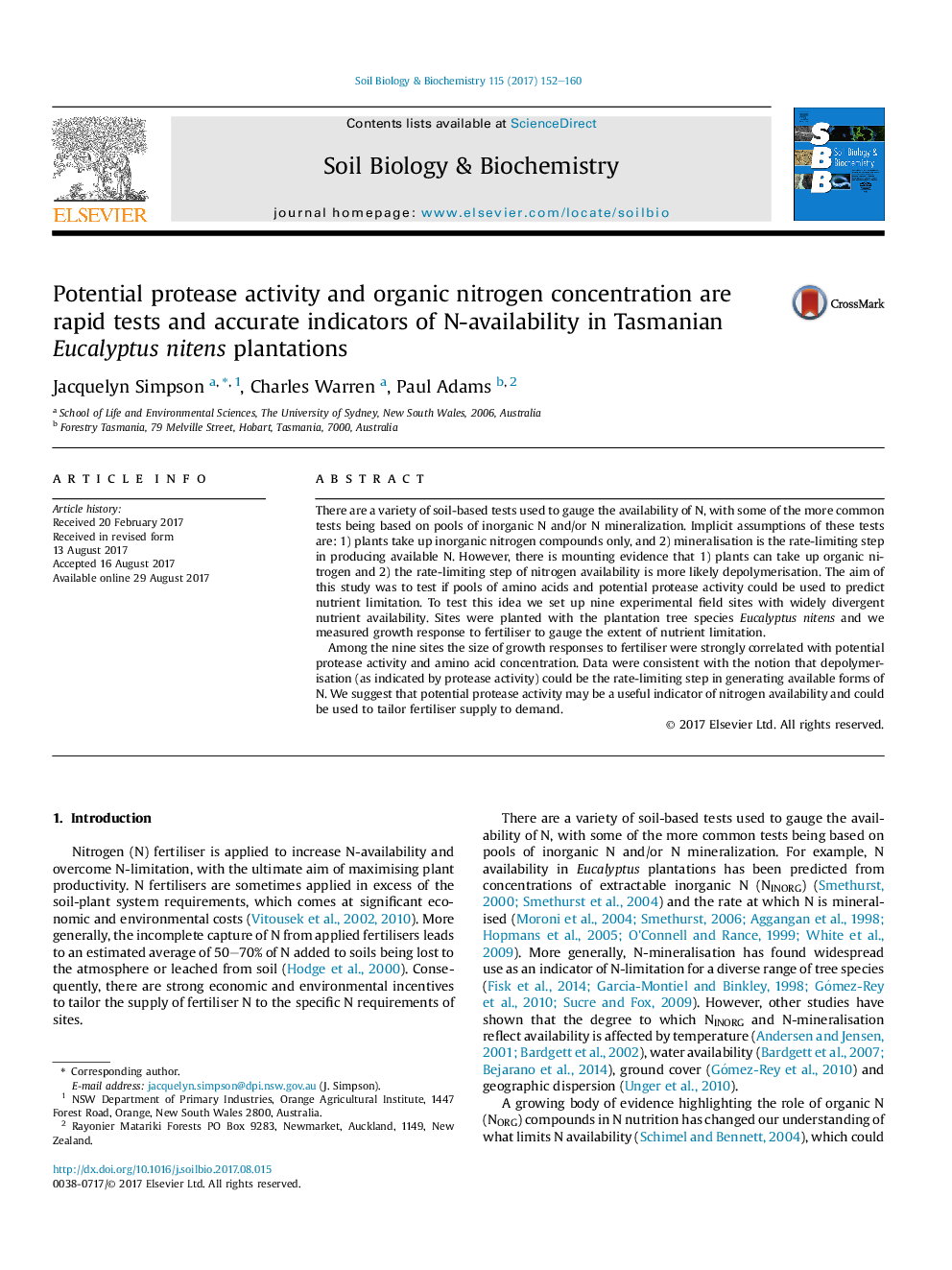| Article ID | Journal | Published Year | Pages | File Type |
|---|---|---|---|---|
| 5516236 | Soil Biology and Biochemistry | 2017 | 9 Pages |
â¢Low molecular weight organic N may be important for plant nutrition.â¢We investigated if pools of amino acids and protease activity indicate N limitation.â¢At 9 sites amino acids and protease activity correlate with indices of N limitation.â¢Amino acids and protease activity may be useful indicators of N limitation.
There are a variety of soil-based tests used to gauge the availability of N, with some of the more common tests being based on pools of inorganic N and/or N mineralization. Implicit assumptions of these tests are: 1) plants take up inorganic nitrogen compounds only, and 2) mineralisation is the rate-limiting step in producing available N. However, there is mounting evidence that 1) plants can take up organic nitrogen and 2) the rate-limiting step of nitrogen availability is more likely depolymerisation. The aim of this study was to test if pools of amino acids and potential protease activity could be used to predict nutrient limitation. To test this idea we set up nine experimental field sites with widely divergent nutrient availability. Sites were planted with the plantation tree species Eucalyptus nitens and we measured growth response to fertiliser to gauge the extent of nutrient limitation.Among the nine sites the size of growth responses to fertiliser were strongly correlated with potential protease activity and amino acid concentration. Data were consistent with the notion that depolymerisation (as indicated by protease activity) could be the rate-limiting step in generating available forms of N. We suggest that potential protease activity may be a useful indicator of nitrogen availability and could be used to tailor fertiliser supply to demand.
